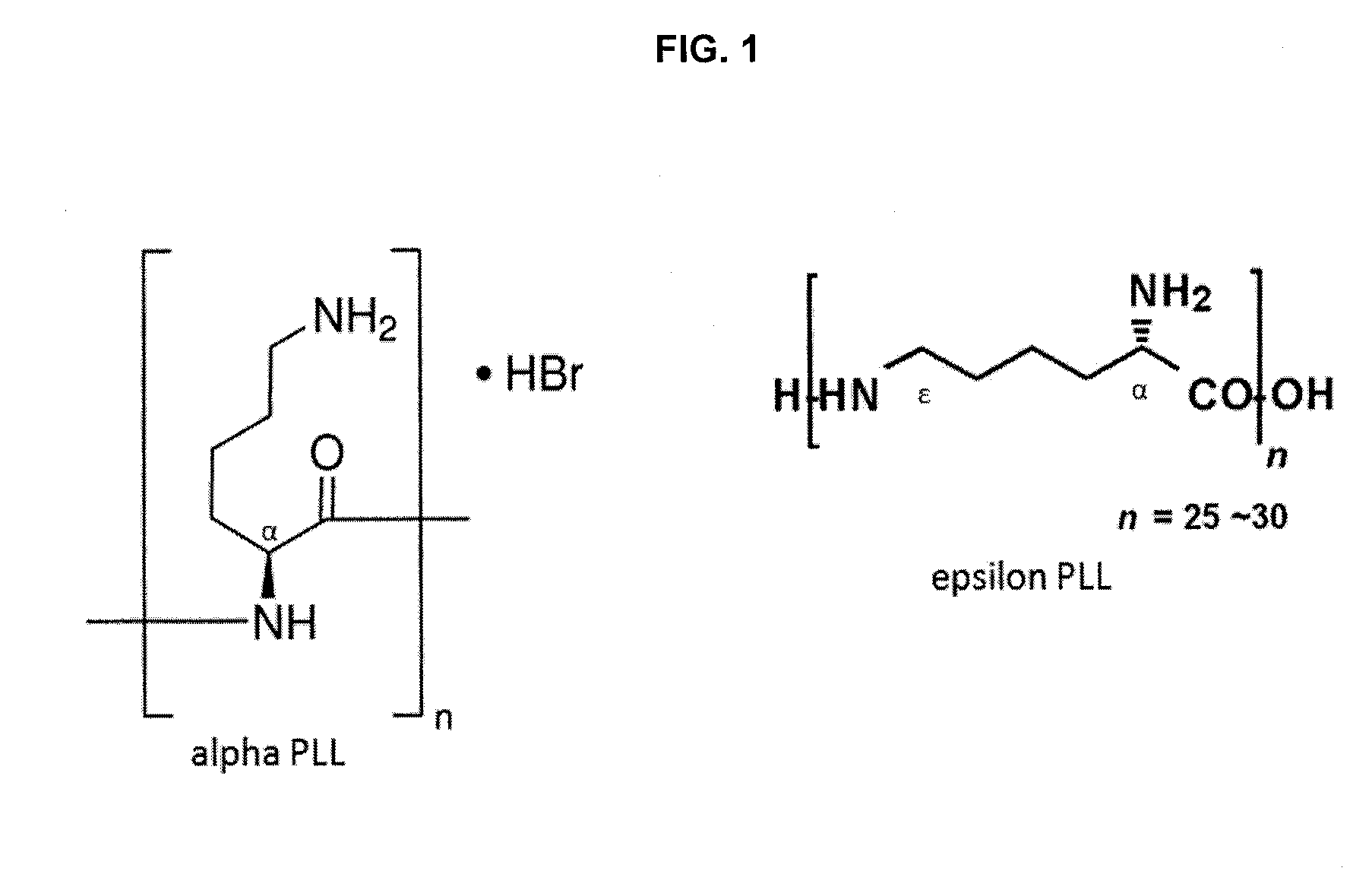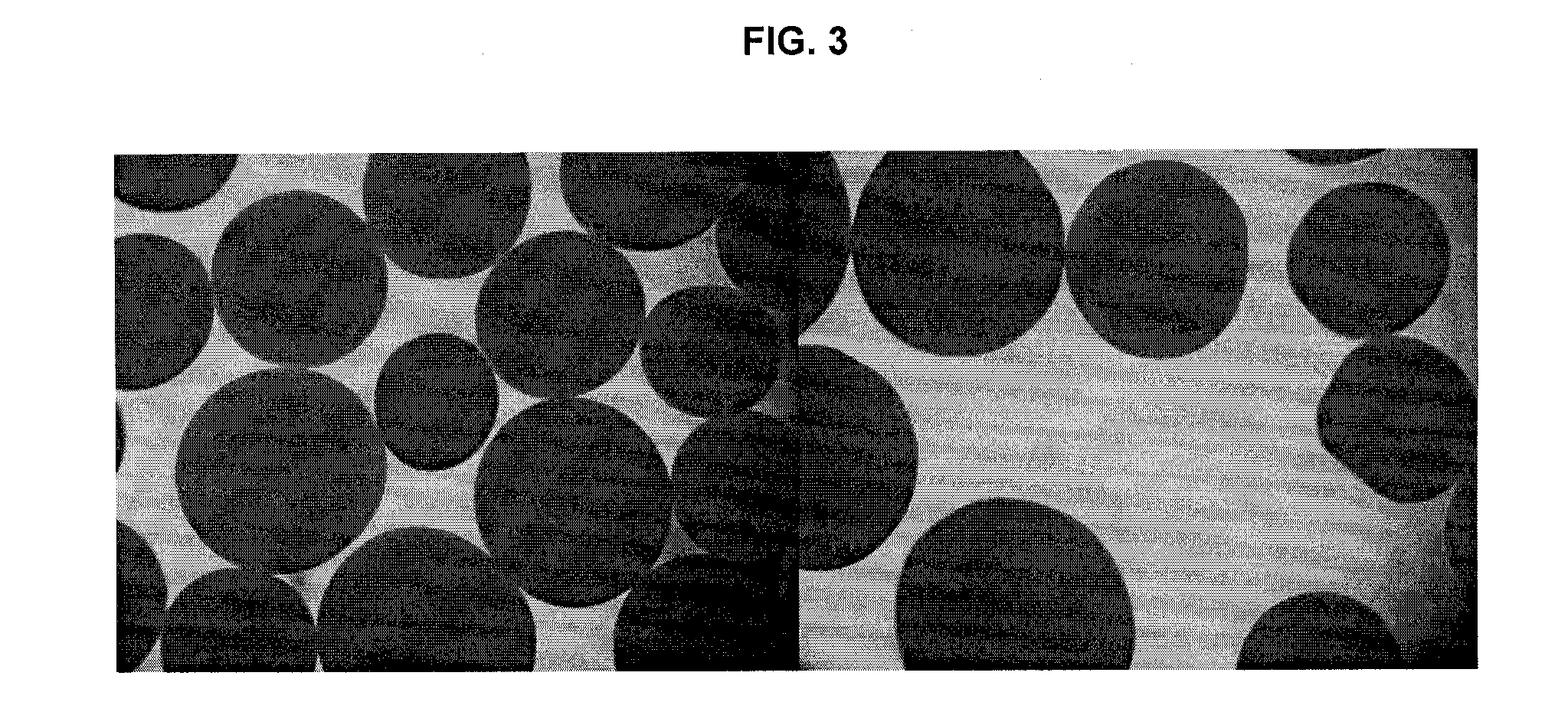Epsilon-poly-lysine capsules
a technology of lysine capsules and lysine, which is applied in the field of capsules, can solve the problems of high cost of -poly-l-lysine, inability to optimally biocompatibility of apa microcapsules, and drawbacks of producing such capsules, and achieve the effect of improving buoyancy and decreasing tendency
- Summary
- Abstract
- Description
- Claims
- Application Information
AI Technical Summary
Benefits of technology
Problems solved by technology
Method used
Image
Examples
example 1
Morphology and Structural Properties of AεPA Versus AαPA Microcapsules
[0156]Preparation of APA microcapsules for transmission electron microscopy (TEM):
To prepare and fix the AαPA or AεPA microcapsules in preparation for TEM, microcapsules were washed (×3) with buffer for 30 min., post-fixed with 1% aqueous OsO4, and 1.5% aqueous potassium ferrocyanide for 2 h at 4° C. The samples were then washed (3×) with ddH2O for 15 min., dehydrated with acetone: 30%, 50%, 70%, 80%, 90%, (3×) 100% each for 15 min. and infiltrated with epon / acetone 1:1 overnight, 2:1 all day, 3:1 overnight, pure epon the following day for day 4 h. Samples were then embedded with a change of fresh epon., polymerization in 58° C. oven for 4 h. The samples were trimmed and cut into 90-100 nm thick sections, put onto a 200 mesh copper grid, sections on grids were stained with uranyl acetate for 6 minutes and then Reynold's lead for 5 min.
Specimen Preparation for SEM:
[0157]Samples previously stored in 0.85% saline wer...
example 2
Bacteriosatic Effects of Free ε-PLL Versus α-PLL on Probiotic Bacteria and Viability of AαPA Versus AεPA Microencapsulated Probiotic Bacteria
Bacterial Growth in Presence of α / ε-PLL:
[0165]α-poly-L-lysine and ε-poly-L-lysine stock solutions of 0.8% (w / v) were filter sterilized and diluted to the appropriate concentrations (e.g. 0.05% a / ε-PLL (1.25 mL 0.8% (w / v) PLL+18.75 mL MRS). 20 ml MRS was used as control. A 1% (v / v) inoculum (200 μL) of overnight growing culture was added to each 20 ml solution. Incubation was performed at 37° C. and samples were performed at 0, 1, 2, 3, 4, 5, 6, 7, 8, 24 hours. At each time point, 100 μL of sample was removed from the incubating medium for determination of cell viability. Colony forming units (cfu) / ml were measured as indication of cell viability.
Inhibitory Effect of PLL on Bacterial Growth:
[0166]To determine the inhibitory effect of increasing concentrations on bacterial growth of Lactobacillus reuteri NCIMB 701089, 25 mL stock solutions of PLL...
example 3
BSH Activity of AαPA Versus AεPA Microencapsulated Lactobacillus Reuteri NCIMB 701089
Assessment of BSH Activity of Microencapsulated Cells:
[0171]To assess the enzymatic activity of α-PLL or ε-PLL microencapsulated bile salt hydrolase (BSH) active probiotic bacteria, BSH activy was determined by HPLC. Microcapsules were washed 3 times with 3 volumes of sterile 0.85% saline in a mesh bottomed beaker to remove all traces of storage media. Once washed, the microcapsules were divided into 2.5 g samples and resuspended in 2 ml MRS. The suspension was added to 18 ml of MRS containing 5 mM taurodeoxycholic acid (TDCA) (Sigma, St Louis) and 5 mM glycodeoxycholic acid (GDCA) (Sigma, St Louis). Samples were taken out at 0.5, 1, 3, and 5 hours after the samples were placed in the 37° C. incubator. The amount of GDCA and TDCA remaining in the samples was analyzed by HPLC. Analyses were performed on a reverse-phase C-18 column (LiChrosorb RP-18 250 nm×4.6 mm, 5 μm) at a flow rate of 1.0 ml / min. T...
PUM
| Property | Measurement | Unit |
|---|---|---|
| Temperature | aaaaa | aaaaa |
| Fraction | aaaaa | aaaaa |
| Time | aaaaa | aaaaa |
Abstract
Description
Claims
Application Information
 Login to View More
Login to View More - R&D
- Intellectual Property
- Life Sciences
- Materials
- Tech Scout
- Unparalleled Data Quality
- Higher Quality Content
- 60% Fewer Hallucinations
Browse by: Latest US Patents, China's latest patents, Technical Efficacy Thesaurus, Application Domain, Technology Topic, Popular Technical Reports.
© 2025 PatSnap. All rights reserved.Legal|Privacy policy|Modern Slavery Act Transparency Statement|Sitemap|About US| Contact US: help@patsnap.com



